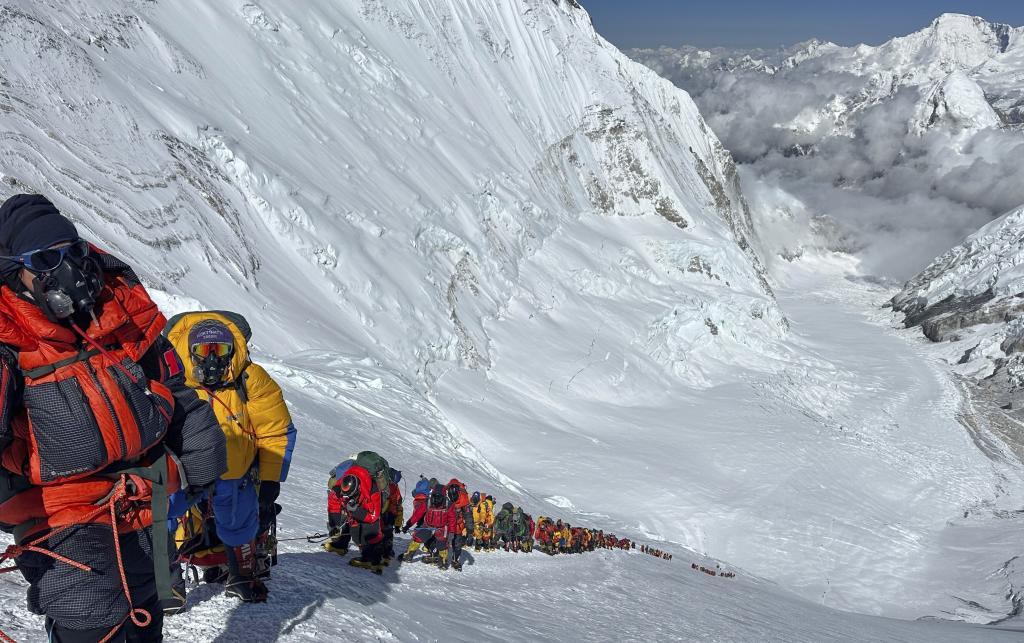Climbing up to 4,900 meters on the east face of Everest, in Tibet, over 300 rescuers have participated in a massive race against time operation to save hundreds of hikers who were stranded on the mountain after a strong blizzard over the weekend.
Firefighters, local guides, and yak herders, the woolly-coated bovid native to the Himalayas, took part in what Chinese media have dubbed as one of the largest search and rescue operations in the region. Last night, a total of 580 stranded hikers were guided to the small town of Qudang, where another 350 people had been relocated on Sunday after being rescued.
A heavy snowstorm that started last Friday night trapped tourists who were in camps set up in the remote Tibetan valley, a highly trafficked route always at the beginning of October because it coincides with the Golden Week, an eight-day national holiday in China. The snow, which was knee-deep, blocked access to the area.
"The lightning and thunderstorms didn't stop. The snowfall was so intense that we could barely sleep," explained photographer Dong Shuchang on social media, who was in the first group to be rescued.
"Never has such an extreme storm occurred at this time of year, which is characterized by the monsoon season having passed and clear skies," noted another user.
A tent almost buried in the snow.XIONG JINXINAFP
During these days, videos recorded by tourists have gone viral showing tents buried under layers of snow and rescuers guiding groups through paths blocked by the snow.
"This storm is very unusual", explained a local guide. Some Chinese state media, which have closely followed the rescue, reported that hundreds of villagers worked alongside emergency teams to dig through the thick snow and that snowplows reopened the main access roads to the mountain on Tuesday night.
"The operations focused on the Gama Valley, one of the top ten classic hiking routes in the world, which rises from 2,100 to over 5,000 meters. The only means of transportation to reach it are yaks and horses," explained a local guide.
This week, on another mountain north of Tibet, there was another rescue operation to evacuate 251 hikers, also trapped after the snowstorm. State broadcaster CCTV reported that one person died from hypothermia.
Several semi-buried tents in the snow.XIONG JINXINAFP
While the hikers were stranded on the Tibetan side of Everest, in neighboring Nepal, torrential rains and floods left around fifty people dead. In southern China, a strong typhoon forced authorities to evacuate over 150,000 people.
"The region is currently facing extreme weather conditions. These disasters are part of a growing trend of weather phenomena related to climate change," states a press release from the NGO World Vision, which is assisting in Nepal's aid efforts after the storm.
"Atmospheric warming caused by climate change is holding more moisture and intensifying precipitation. After wreaking havoc in Nepal, this moisture-laden air moved across the Himalayas towards China, where it collided with colder air masses, resulting in heavy snowfall. The outcome: simultaneous floods and snowstorms in one of the world's most fragile mountainous regions."
